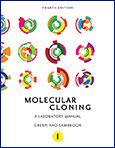
Photo from archive.org
In Alzheimer's disease (AD), insoluble and fibrillary amyloid-β (Aβ) peptide accumulates in plaques. However, soluble Aβ oligomers are most potent in creating synaptic dysfunction and loss. Therefore, receptors for Aβ… Click to show full abstract
In Alzheimer's disease (AD), insoluble and fibrillary amyloid-β (Aβ) peptide accumulates in plaques. However, soluble Aβ oligomers are most potent in creating synaptic dysfunction and loss. Therefore, receptors for Aβ oligomers are hypothesized to be the first step in a neuronal cascade leading to dementia. A number of cell-surface proteins have been described as Aβ binding proteins, and one or more are likely to mediate Aβ oligomer toxicity in AD. Cellular prion protein (PrPC) is a high-affinity Aβ oligomer binding site, and a range of data delineates a signaling pathway leading from Aβ complexation with PrPC to neuronal impairment. Further study of Aβ binding proteins will define the molecular basis of this crucial step in AD pathogenesis.
Journal Title: Cold Spring Harbor perspectives in medicine
Year Published: 2017
Link to full text (if available)
Share on Social Media: Sign Up to like & get
recommendations!